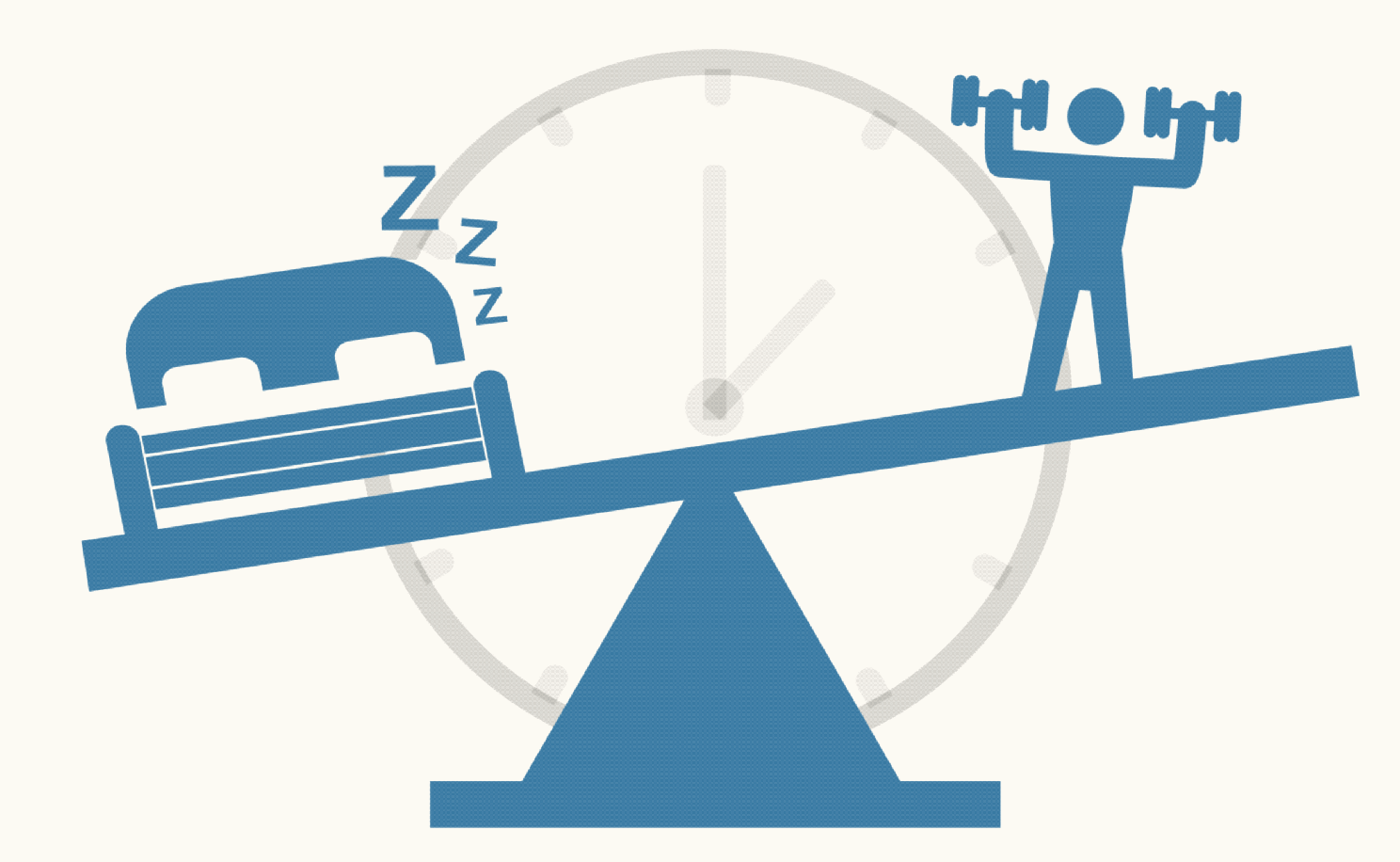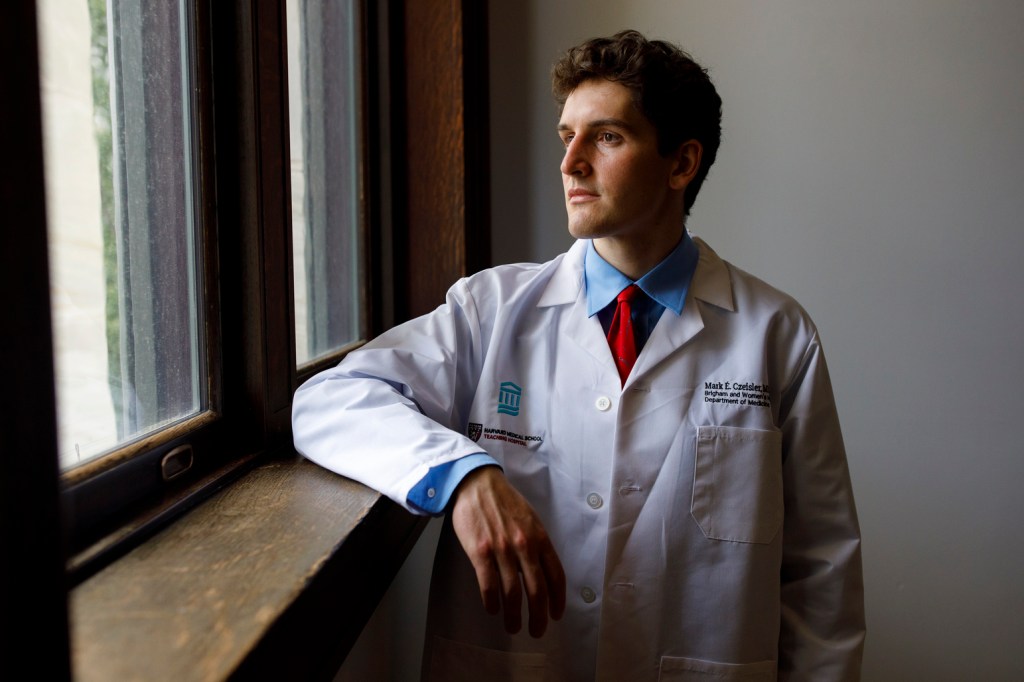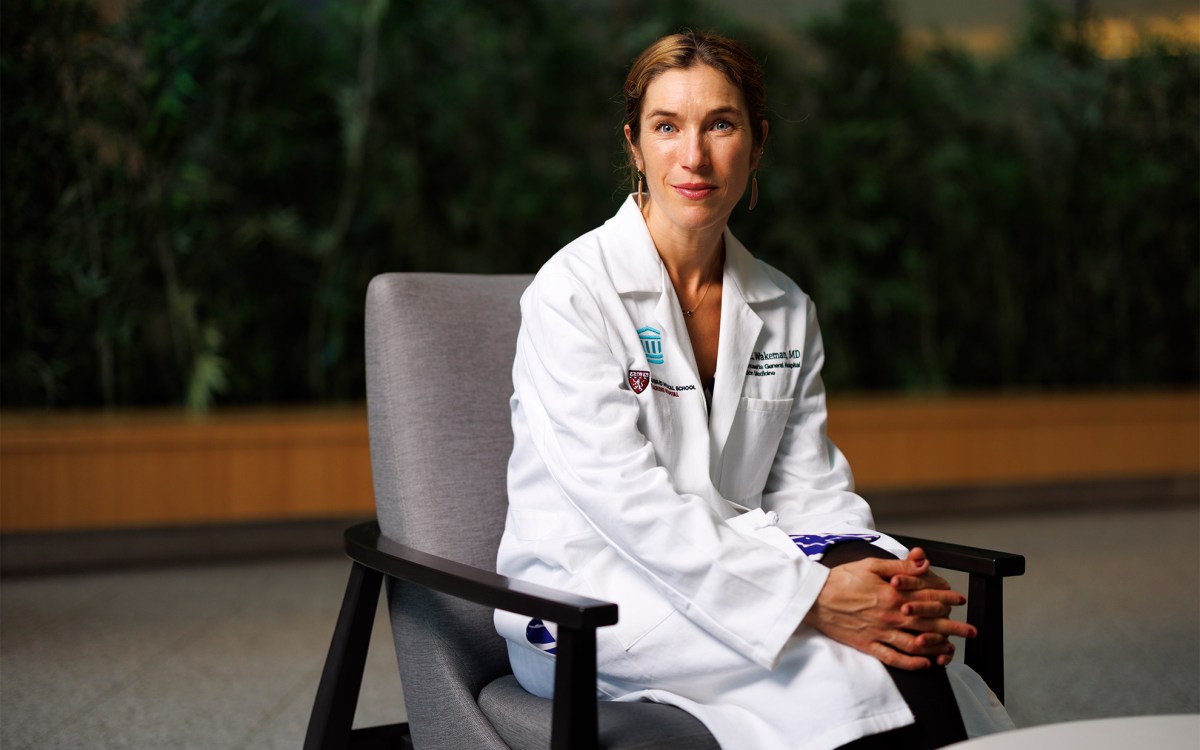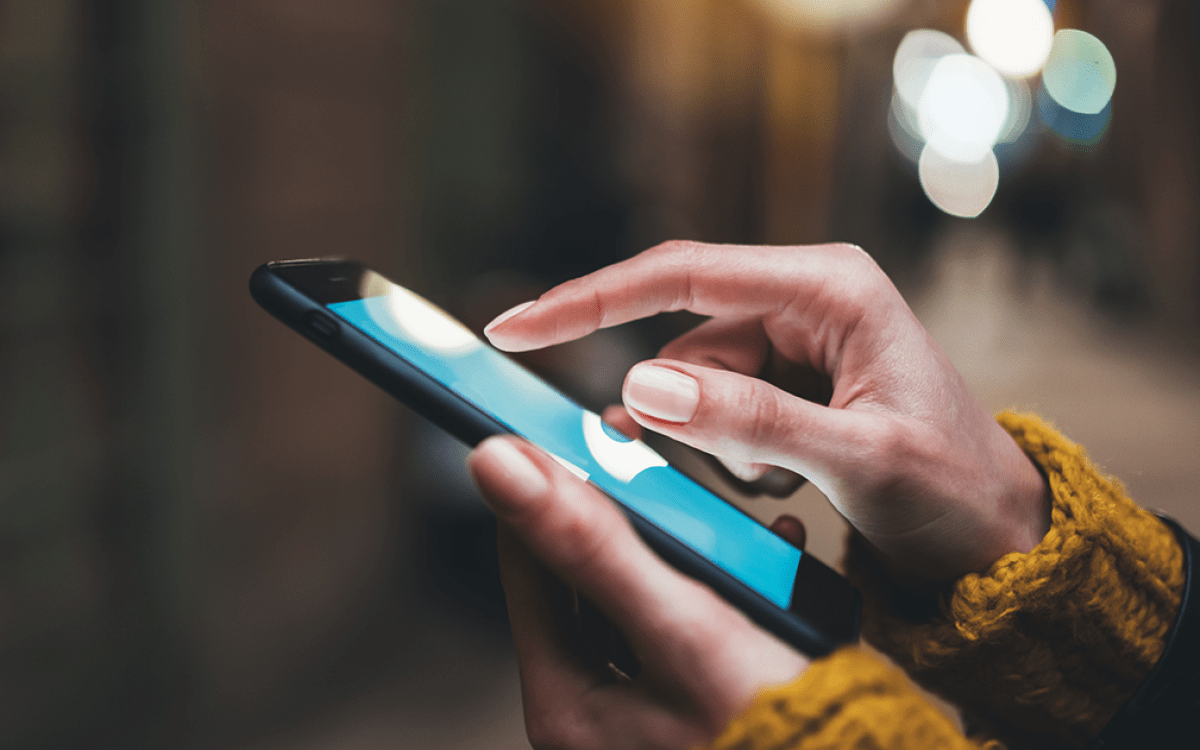
Illustration by Liz Zonarich/Harvard Staff
Going to bed earlier may help you hit fitness goals
New study finds link between sleep curfew, higher levels of moderate-to-vigorous physical activity
The proverb says, early to bed and early to rise makes a person healthy, wealthy, and wise.
Wealth and wisdom may still be a question mark, but sleep experts at Harvard, Brigham and Women’s Hospital, and Monash University say there’s strong evidence that hitting the sack earlier than usual and getting a good night’s rest can help with a key factor in good health: getting enough heart-pumping physical activity.
The study, conducted from 2021 to 2022, showed that people who got the most moderate-to-vigorous physical activity the next day went to sleep earlier than usual, but slept about as much as they usually did. The biggest difference in next-day activity was between people who typically slept 5 hours a night, on average, and those who averaged 9 hours. In that case, the short sleepers got 41.5 more minutes of moderate-to-vigorous physical activity the following day.
“In general, individuals who went to bed earlier engaged in more frequent and longer physical activity per day than those who habitually went to bed later.”
Mark Czeisler
“In general, individuals who went to bed earlier engaged in more frequent and longer physical activity per day than those who habitually went to bed later,” said Mark Czeisler, a clinical fellow in medicine at Harvard Medical School, resident physician at Brigham and Women’s Hospital, and an author of the paper.
Czeisler, who graduated from Harvard College in 2019 and HMS in May, said it may be that those people were better rested and more inclined to exercise, but it could also be that going to bed earlier meant waking earlier than usual, simply giving them more time in their day. Untangling specific causes and effects, he said, would be a goal of future work.
U.S. health guidelines suggest that adults get 150 minutes to 300 minutes of moderate-to-vigorous physical activity weekly. Moderate activities are those that cause you to break a sweat and increase breathing and heart rate, such as walking quickly, riding a bike, or doing yard work. Vigorous activities make it hard to talk during them and include things like running, swimming laps, and playing basketball.

Mark Czeisler.
Veasey Conway/Harvard Staff Photographer
“The biggest takeaway is that sleep and physical activity may be more closely related than we previously thought,” said Josh Leota, adjunct researcher with the Brigham’s Division of Sleep and Circadian Disorders, research fellow at Monash University in Australia, and the paper’s first author. “Even small changes in when you go to bed may be linked to how active you are the next day. So, rather than viewing sleep and exercise as competing for time, we should think about how they can support each other.”
“Even small changes in when you go to bed may be linked to how active you are the next day. So, rather than viewing sleep and exercise as competing for time, we should think about how they can support each other.”
Mark Czeisler
The research, published in June in the Proceedings of the National Academy of Sciences, takes advantage of the evolution of wearable fitness trackers, which provided daily sleep and activity data for nearly 20,000 Americans who logged about 6 million person-nights over the course of a year.
Researchers used anonymous data provided by WHOOP Inc., a Boston health tracker technology company with roots at Harvard. The WHOOP results were verified by a second study, All of Us, run by the National Institutes of Health, in which a cohort designed to be demographically representative was given a free Fitbit device to participate.
Czeisler said the All of Us study showed similar patterns between sleep and physical activity, but the effect’s magnitude was smaller. That is likely due to differences between the study populations, he said, with the WHOOP population more likely to be self-selected for interest in fitness and athletic performance.
The work, which did not receive outside funding, helps bring clarity to an area where previous studies were mixed.
Some failed to show any connection between sleep patterns and levels of moderate-to-vigorous physical activity. Others, meanwhile, do show a connection, but point in different directions. Experimental studies that control how much sleep the subjects get showed lower next-day physical activity for those who slept less than usual, while epidemiological studies — often conducted via questionnaire to those living freely under normal circumstances — indicated the opposite.
One advantage of the current study is that collecting longitudinal data from two large-scale samples across several months and up to a year allows for both between-participant comparisons and “within participant” analysis of an individual’s tracker data under different circumstances.
It also helps, Czeisler said, that the tracker data is objective, reducing problems of bias or difficulty with recall that may be present in questionnaire-based studies.
Though both sleep and physical activity have been studied previously, Czeisler said the current work is among the largest in sample size and longest in duration to examine the relationship between the two in the setting of everyday life. That’s important because physicians and public health officials often make separate recommendations about how much sleep is optimum and how much physical activity is ideal for good health, but there’s little public health messaging about how one might influence the other.
Busy adults might choose, for example, to get less sleep, rising early to work out. Or they may choose to stay up late with friends on Friday and Saturday nights, which may impact weekend workouts.
“If one of the takeaways is that people are sacrificing sleep for exercise or exercise for sleep, the question becomes what amount of each behavior maximizes health span and lifespan?” Czeisler said. “There are only 24 hours in a day; what is the optimal balance?”
Leota said an important next step is to use the findings to design experiments to determine cause and effect, with the aim of providing a solid foundation for future public health recommendations.
“We would like to test whether encouraging earlier bedtimes directly leads to more physical activity the next day, within an experimental paradigm,” Leota said. “This would provide strong evidence for updating public health messaging to improve population physical activity levels.”




